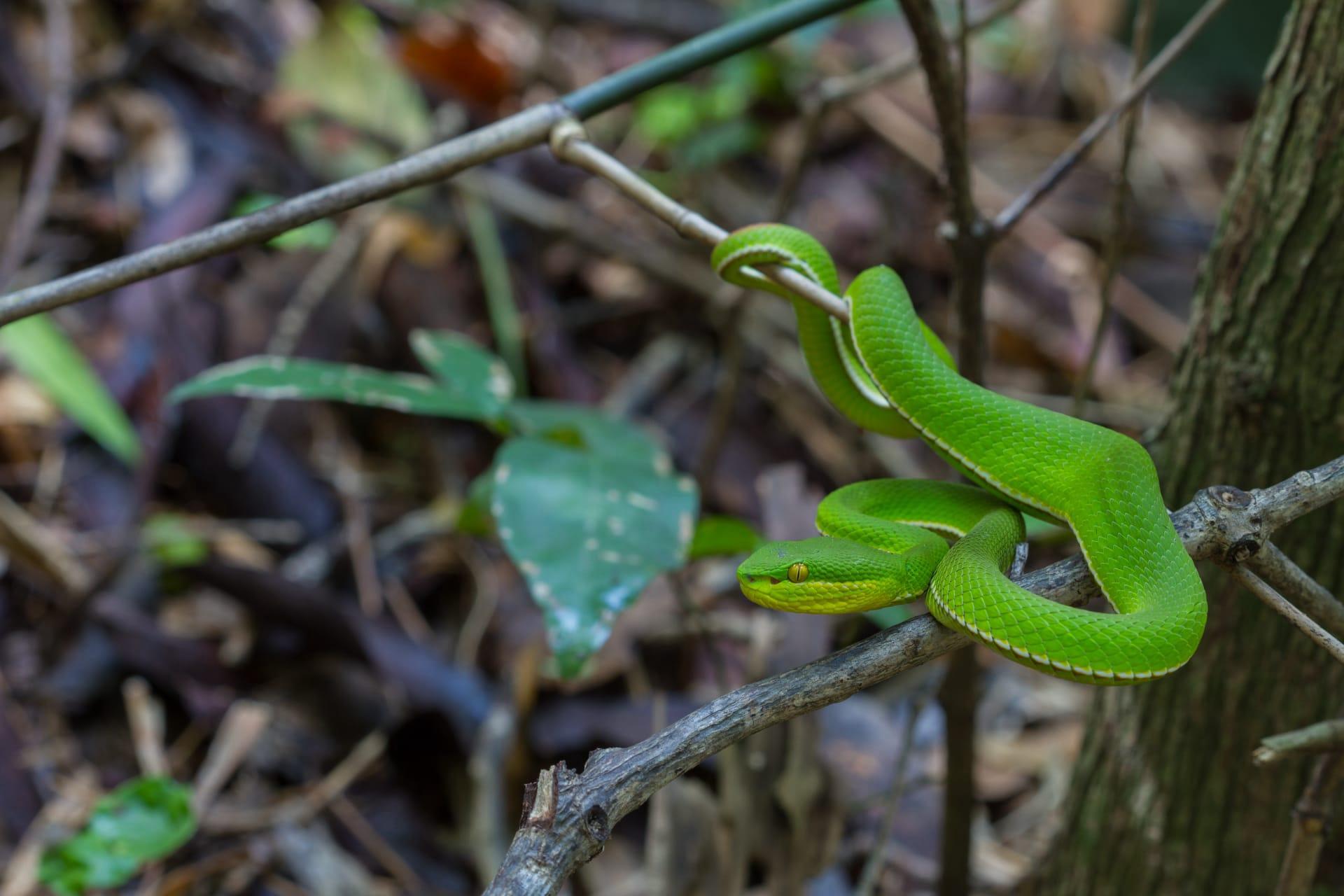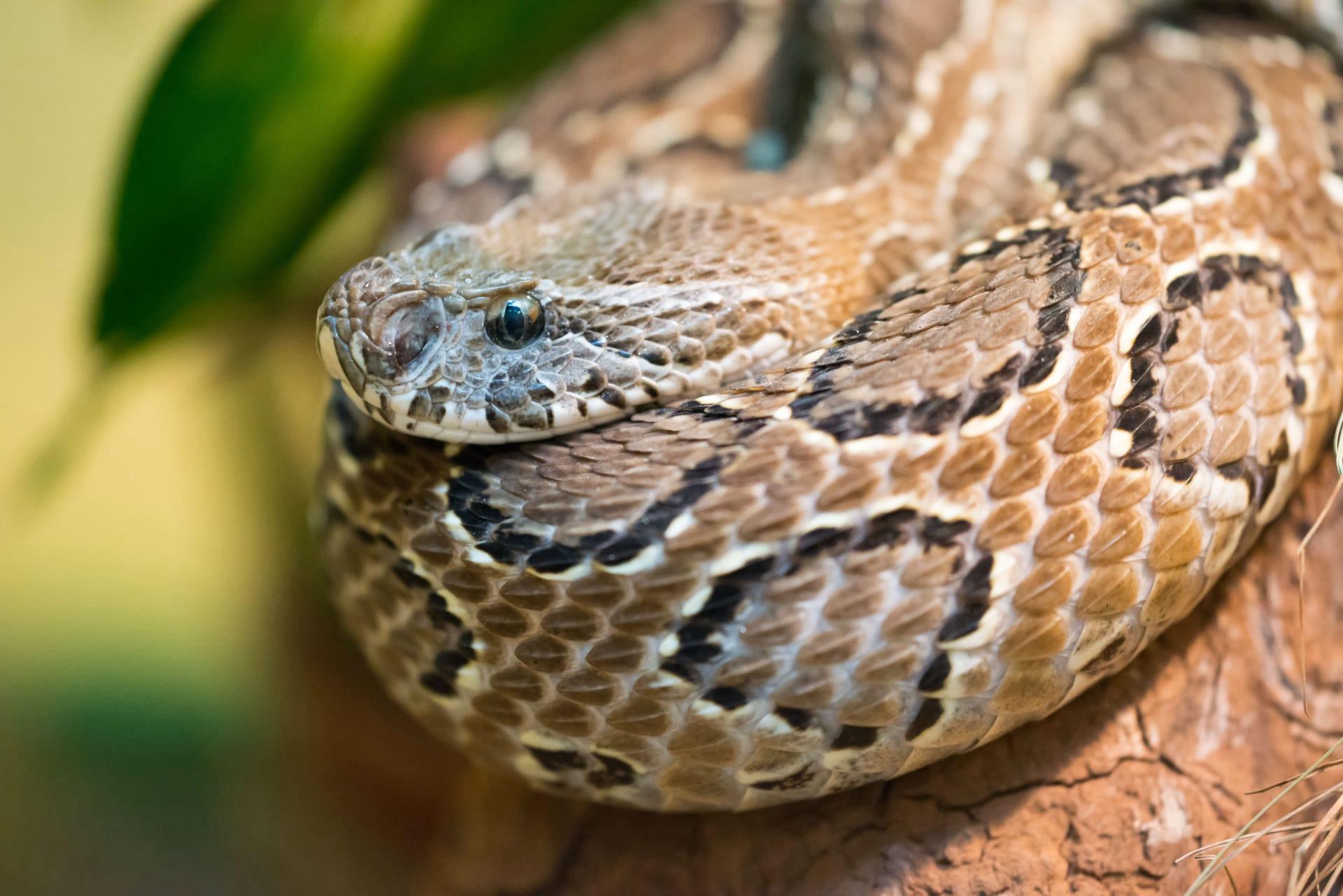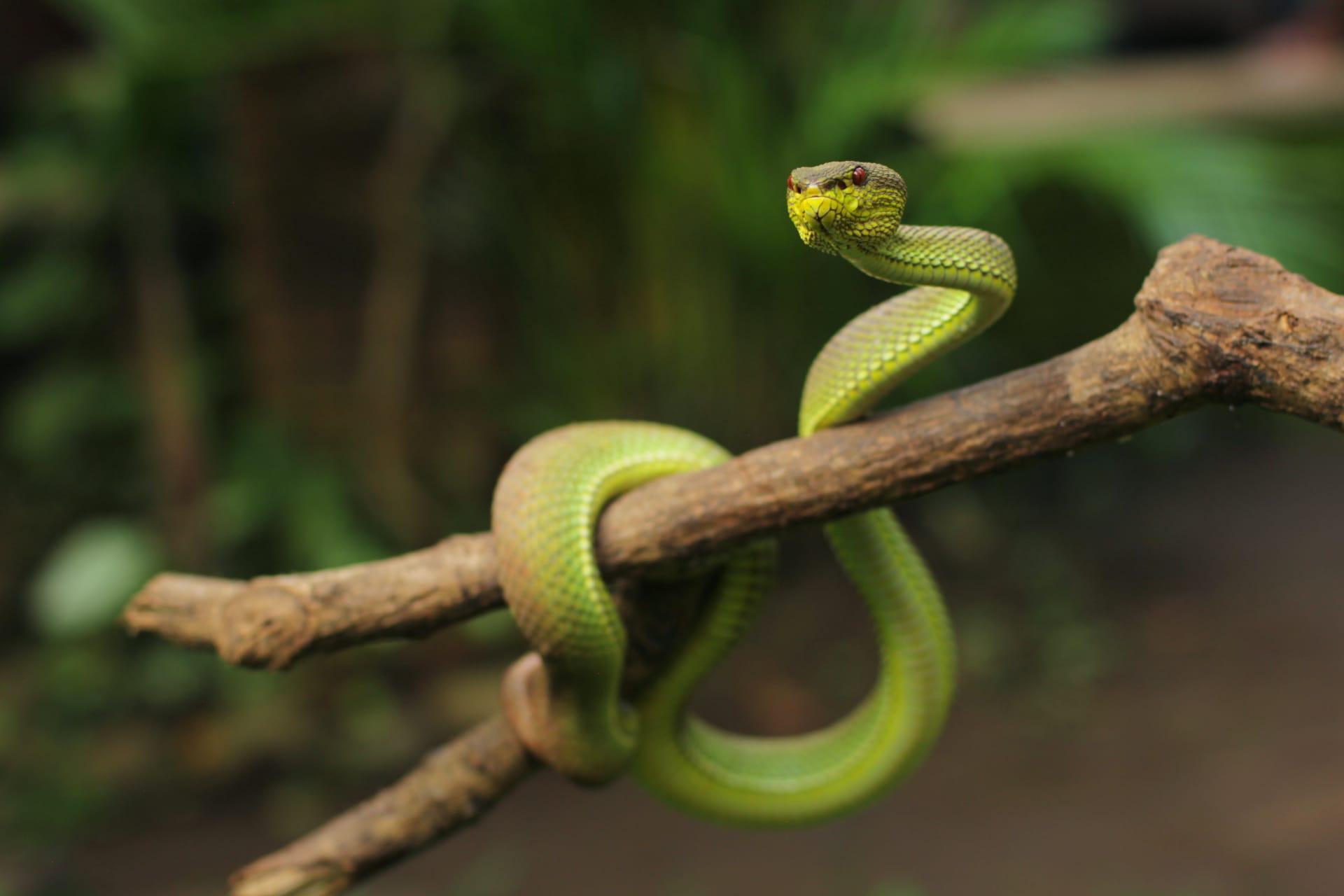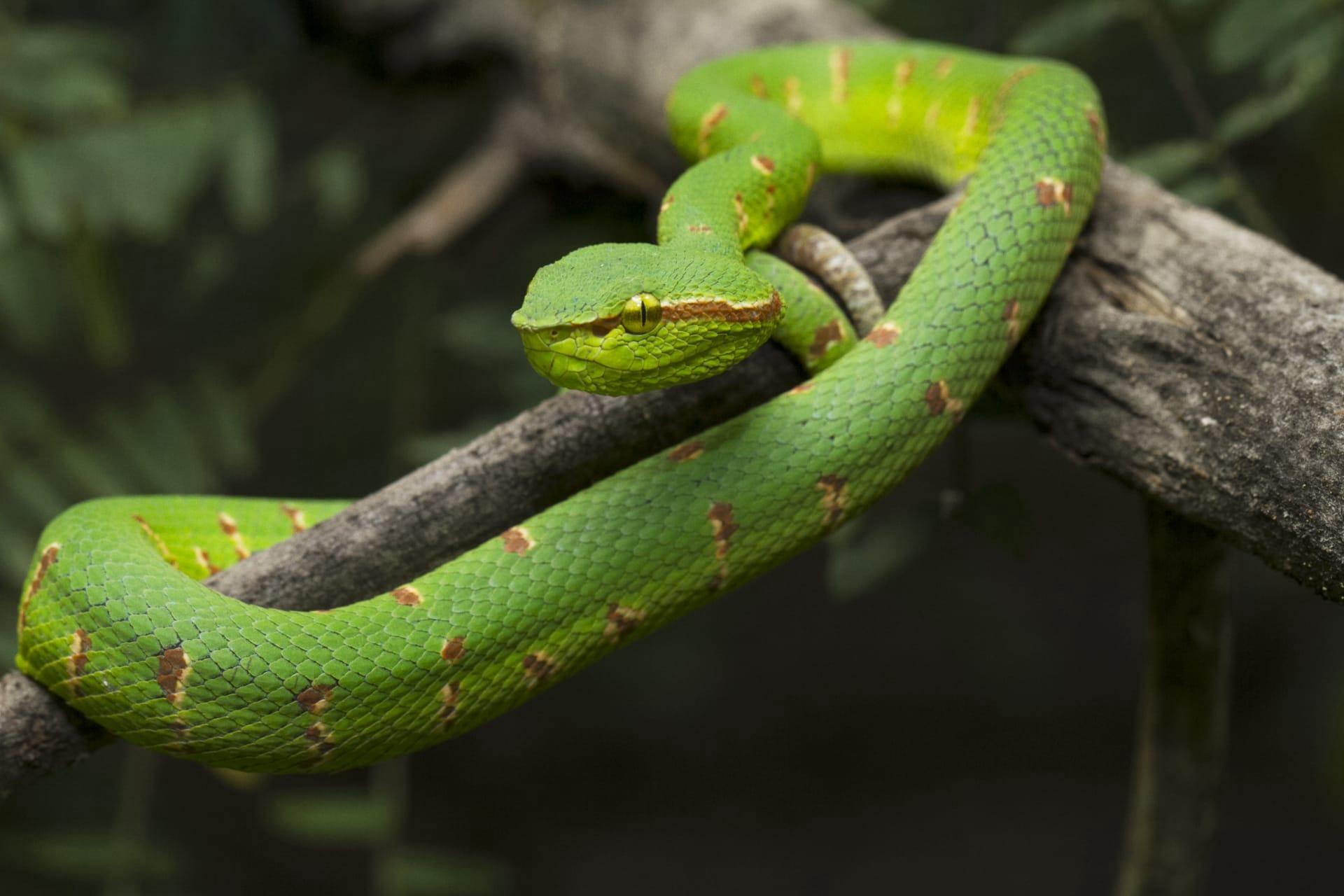Viper Trivia
- Home /
- Trivia Question /
- Animal /
- Viper Trivia
1
Question: How can you identify a viper among other snakes?
Answer: Vipers are distinct with their triangular heads, which are wider than their necks, and their unique vertically elliptical pupils, unlike the round pupils found in many non-venomous snakes. Most vipers also have a noticeable pit between their eyes and nostrils, part of their heat-sensing system. They typically have a stocky body and short tail, and their length can vary, with some species like the Russell's viper reaching up to 5.5 feet (167 cm).
Question: What makes the viper's venom so potent?
Answer: Viper venom is a complex cocktail of enzymes and proteins, each serving a specific purpose. It can cause rapid blood clotting or prevent clotting altogether, leading to internal bleeding. Hemotoxins and neurotoxins in the venom can break down blood cells and attack the nervous system, respectively. The potency varies among species, with the saw-scaled viper's venom being particularly lethal, capable of causing hemorrhage and organ failure.

2
Question: Is it true that all vipers are highly aggressive?
Answer: This is a common misconception. Vipers, like the common European adder, often prefer to avoid confrontation. They tend to be more defensive than aggressive, striking mainly when threatened or provoked. Their behavior can vary, but they are not inherently aggressive towards humans.
Question: Do vipers always inject venom when they bite?
Answer: No, vipers don't always inject venom with their bites. They can perform what's known as a 'dry bite', where no venom is released. This is a defensive mechanism, as venom production can be energetically costly for the snake. Dry bites occur in about 50% of viper bites, serving as a warning or a deterrent rather than a lethal attack.

3
Question: How do vipers hunt and detect their prey?
Answer: Vipers are ambush predators, relying on their camouflage and patience to catch prey. They use their heat-sensing pits to detect warm-blooded prey, even in complete darkness. This pit organ is sensitive enough to detect a temperature change of 0.003 degrees Celsius, allowing them to accurately strike at the vital areas of their prey.
Question: Can viper venom have medical applications?
Answer: Surprisingly, yes! Research has shown that viper venom components can be used in developing medications. For instance, the venom of the Brazilian pit viper led to the development of Captopril, a drug used to treat high blood pressure and heart failure. Its ability to inhibit certain enzymes in the human body has been a groundbreaking discovery in medicine.

4
Question: What is the lifespan of a viper in the wild?
Answer: The lifespan of vipers varies by species, but many can live for more than 10 years in the wild. Some species, like the Eastern diamondback rattlesnake, can live up to 20 years. Factors affecting their lifespan include habitat conditions, availability of prey, and threats from predators or human activities.
Question: How do vipers give birth?
Answer: Vipers are unique among many snakes as they are ovoviviparous. This means they give birth to live young instead of laying eggs. The embryos develop inside eggs that remain in the mother's body until they are ready to hatch. When the young vipers are born, they are fully formed and self-sufficient, with venom and fangs ready for hunting.

5
Question: How do vipers contribute to their ecosystems?
Answer: Vipers play a crucial role in controlling rodent populations, which can prevent the spread of diseases and crop damage. By maintaining a balance in the food chain, they contribute to the biodiversity and health of their ecosystems. Additionally, their presence indicates a healthy, functioning ecosystem.
Question: Are vipers found in a variety of climates?
Answer: Yes, vipers are incredibly adaptable and can be found in a wide range of climates. From the deserts of North Africa, where the horned viper thrives, to the cold regions of Northern Europe, home to the common adder. They inhabit forests, mountains, and even wetlands, showcasing a remarkable ability to thrive in diverse environmental conditions.